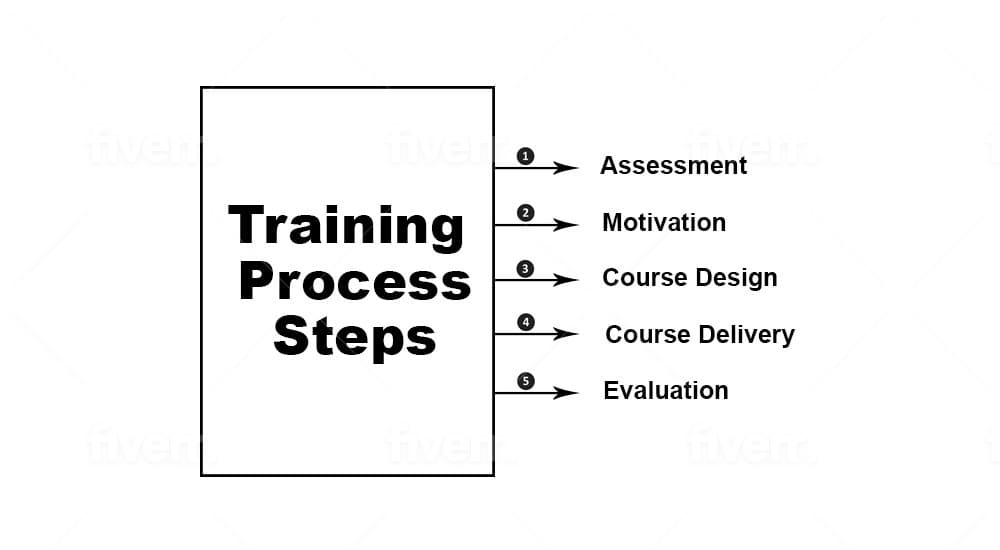The training process includes five steps that should be followed for an efficient training program. The training program helps employees upgrade their skills and attitude to perform a job more efficiently.
Training is not a one-off event; it is a process that starts before the beginning of training and continues after it is completed.
Training Process Steps

The five steps of the training process are:
- Assessment
- Motivation
- Course Design
- Course Delivery
- Evaluation
#1 – Assessment
Assessment of the trainee’s needs, be that of an individual employee or a group of employees, is the first step.
If it is for an individual employee, the organization must identify his/her knowledge gap, and the HR department should recommend suitable training to fill the gap to enable the employee to work more efficiently.
Group training is required when an organization adopts a new process or needs to upgrade the skill(s) of the whole department.
The training can be in-house or outsourced, depending on the requirements.
#2 – Motivation
Motivation is key to a successful training process.
If trainees are not motivated and don’t understand the importance of the training, then they won’t receive the full benefit.
Likewise, trainers and supervisors must be motivated to train the employee.
#3 – Course Design
A training course can be online, offline, virtual, or a recording. Whatever it is, the training course must be engaging, provide value to the trainee, and be aligned with the organization’s goal.
The training material can include books, slides, and manuals that can be provided to employees for future reference. If it is an online course, then content access can be provided to trainees.
#4 – Course Delivery
This is the key stage, and here the actual course is delivered. The trainer should ensure that trainees understand the course content and that sessions are engaging and interactive.
Trainees should also ensure they are involved with the trainer and get every question answered.
Live classes are engaging and interactive since participants can engage in real-time. Online training lacks interaction and engagement, especially when the sessions are recorded. Therefore, trainers and supervisors must add interactive elements during the sessions, such as spot quizzes, Q&A sessions, etc.
#5 – Evaluation
Evaluation is the last stage of the training process. All training must be evaluated for its effectiveness. The first evaluation can be conducted as soon as the delivery stage is completed. The supervisors or trainers can ask trainees for their feedback. They can also conduct an end-of-course test.
The other evaluation verifies that the acquired skills are used on the job. The organization can monitor the job performance of employees after finishing the training.
Summary
Training is a key part of an organization’s strategic planning. It helps improve the skills of employees and increases their efficiency. The training process should be smooth and based on the organization’s needs as well as the skills gaps of employees.
=====================================================================
